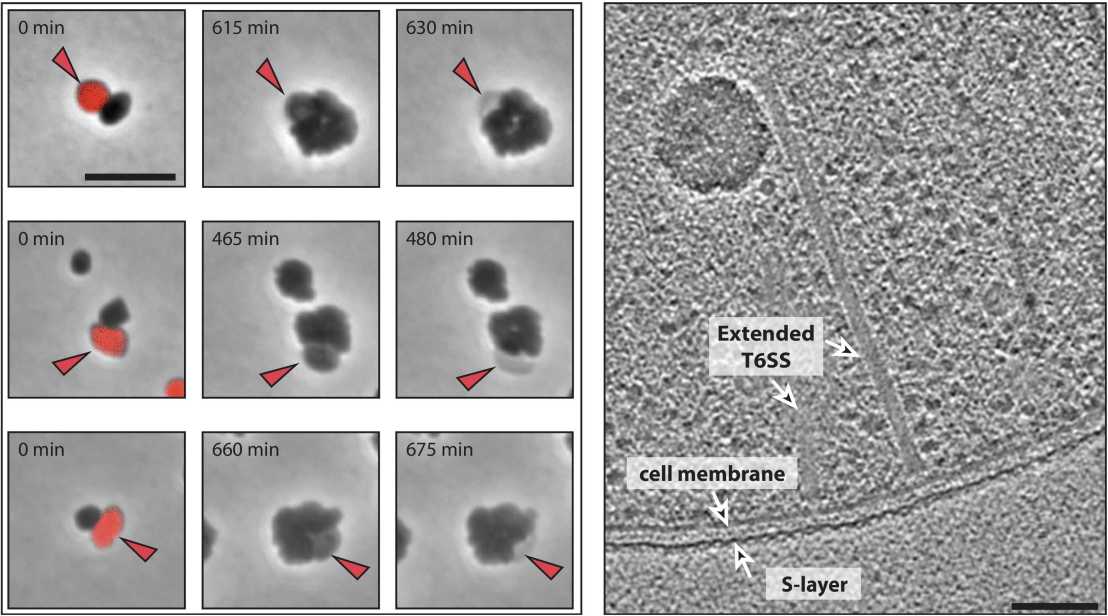Archaea Shape Microbiomes by Using Molecular Spring-Loaded Daggers
In this paper published in Science Advances, the Pilhofer Lab (IMBB) together with the Albers Lab from the University of Freiburg describe the structure and function of contractile injection systems from haloarchaea and show how it can structure the local microbial community they thrive in.

Across all domains of life, microbial communities are shaped by complex interactions between microorganisms. However, the mechanisms behind these interactions among archaea remain poorly understood. The study by Zachs et al. focuses on the role of contractile injection systems (CISs) in the behavior of haloarchaea, a group of microorganisms that thrive in highly saline environments. The researchers specifically examined how these archaea engage in antagonistic interactions, where one microorganism kills or inhibits the growth of another, with a focus on Halogeometricum borinquense and Haloferax volcanii.
The study reveals that H. borinquense attacks H. volcanii, leading to cell lysis and growth inhibition in H. volcanii. Crucially, this antagonistic behavior is contact-dependent, meaning the two organisms must physically interact for the effect to occur. The process also requires the expression of a contractile injection system—a molecular machine that can be imagined as a spring-loaded dagger. Using cryo-electron tomography, the researchers visualized the puncturing device attached to the archaeal cell envelope, uncovering structural and evolutionary similarities to Type Six Secretion Systems (T6SSs) found in bacteria.
In addition, genome analyses combined with proteomics allowed the scientists to identify toxin-immunity pairs—proteins that enable the attacker to kill competitors while avoiding self-damage. Finally, the study discovered that similar T6SS-encoding gene clusters are present in other haloarchaeal species, which also exhibit antagonistic behaviors. This suggests that the CIS represents a conserved mechanism across different species of haloarchaea.
The discovery of an archaeal T6SS offers new insights into how archaea might shape microbiomes and influence the complex dynamics of microbial life, particularly in hypersaline ecological niches such as evaporating salt lakes and solar salterns.
Link to the paper in external page Science Advances